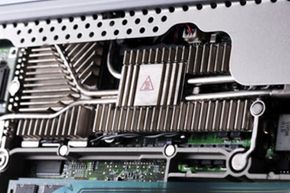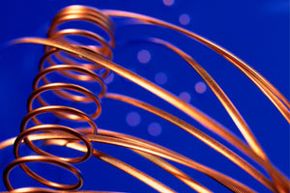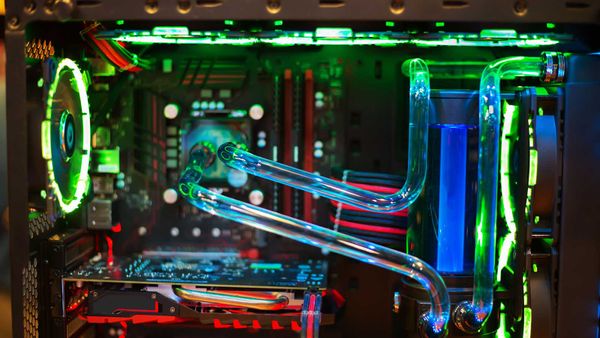Heat can be transferred in three different ways: convection, radiation and conduction. Conduction is the way heat is transferred in a solid, and therefore is the way it is transferred in a heat sink. Conduction occurs when two objects with different temperatures come into contact with one another. At the point where the two objects meet, the faster-moving molecules of the warmer object crash into the slower-moving molecules of the cooler object. When this happens, the faster-moving molecules from the warmer object give energy to the slower-moving molecules, which in turn heats the cooler object. This process is known as thermal conductivity, which is how heat sinks transfer heat away from the computer's processor.
Heat sinks are usually made of metal, which serves as the thermal conductor that carries heat away from the CPU. However, there are pros and cons to using every type of metal. First, each metal has a different level of thermal conductivity. Higher thermal conductivity is more efficient at transferring heat.
One of the most common metals used in heat sinks is aluminum. Aluminum has a thermal conductivity of 235 watts per Kelvin per meter (W/mK). (The thermal conductivity number, in this case 235, refers to the metal's ability to conduct heat. Simply put, the higher the thermal conductivity number of a metal, the more heat that metal can conduct.) Aluminum is also cheap to produce and is lightweight. When a heat sink is attached, its weight puts a certain level of stress on the motherboard, which the motherboard is designed to accommodate. Yet the lightweight makeup of aluminum is beneficial because it adds little weight and stress to the motherboard.
One of the best and most common materials used to make heat sinks is copper. Copper has a very high thermal conductivity of 400 W/mK. It is, however, heavier than aluminum and more expensive. But for operating systems that require an extensive amount of heat transfer, copper is frequently used.
So where does the heat go once it's been conducted from the processor through the heat sink? A fan inside the computer moves air across the heat sink and out of the computer. Most computers also have an additional fan installed directly above the heat sink to help properly cool the processor. Heat sinks with these additional fans are called active heat sinks, while those with a single fan are called passive heat sinks. The most common fan is the case fan, which draws cool air from outside the computer and blows it through the computer, expelling the hot air out of the rear.




